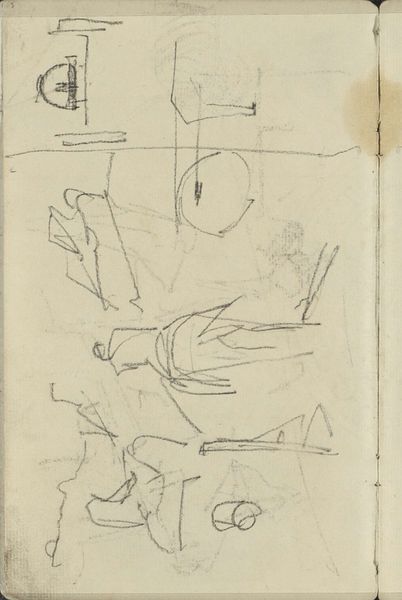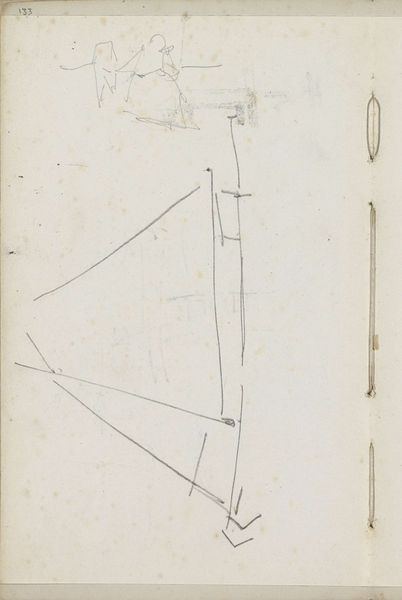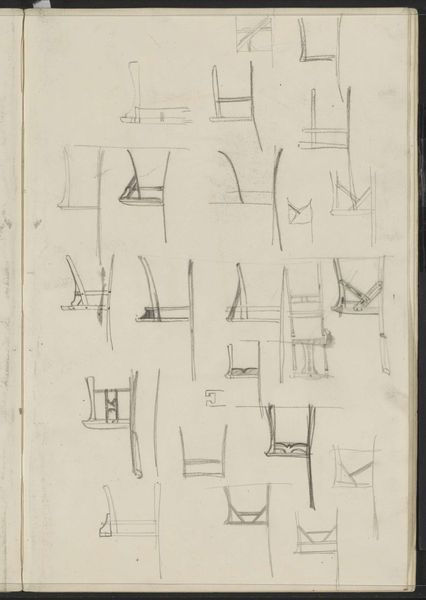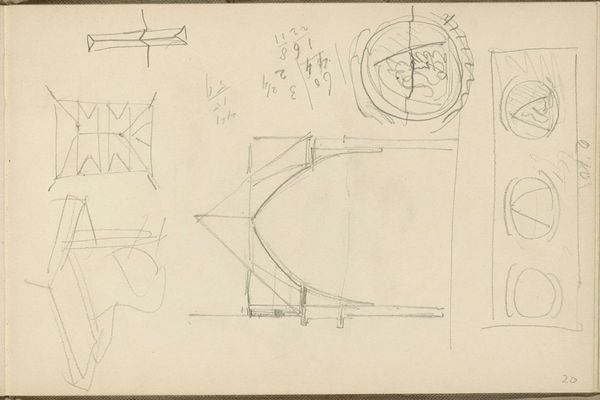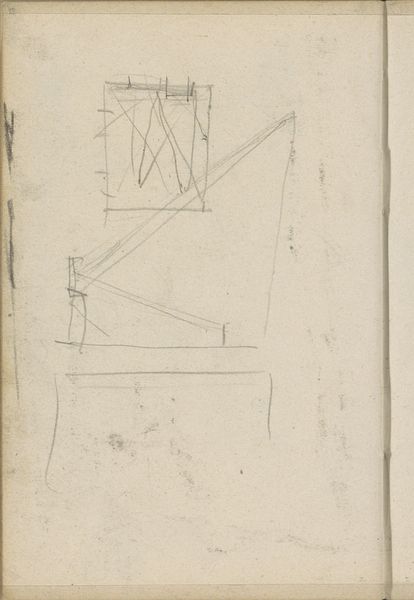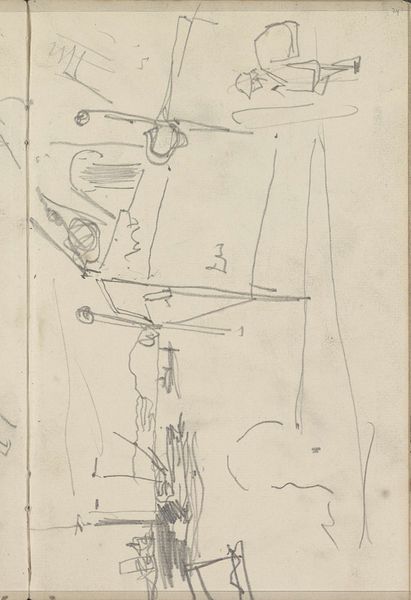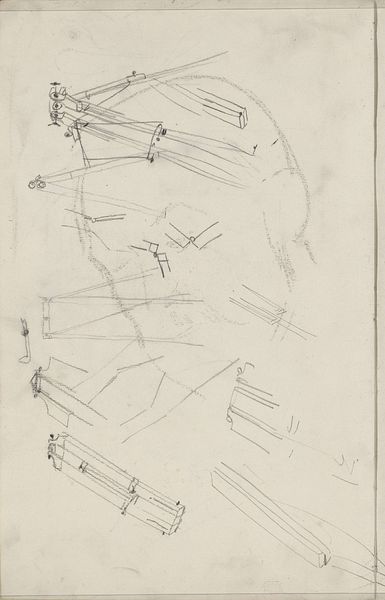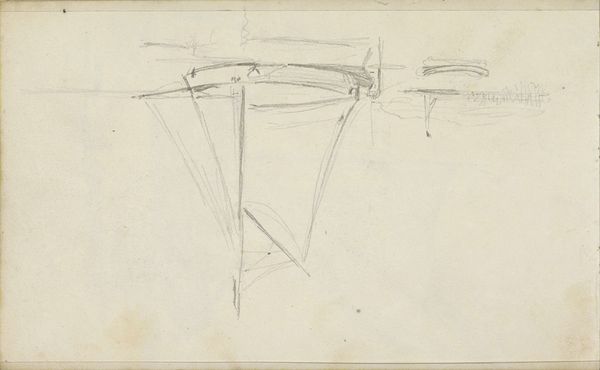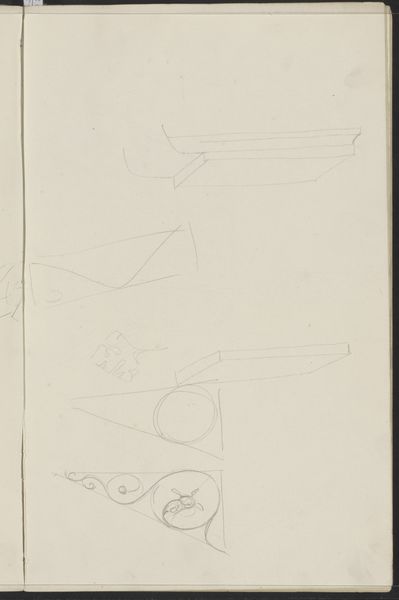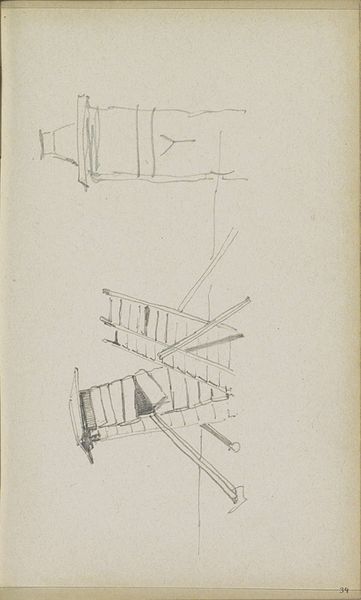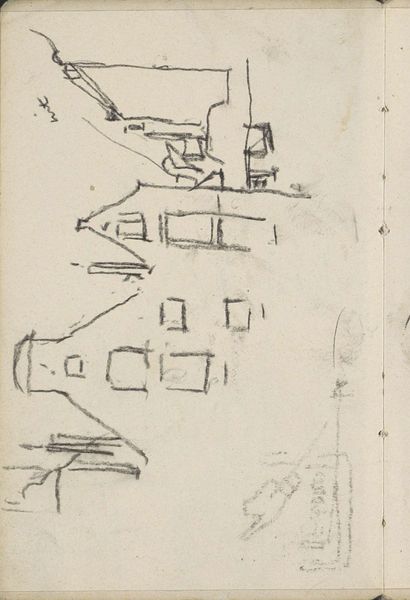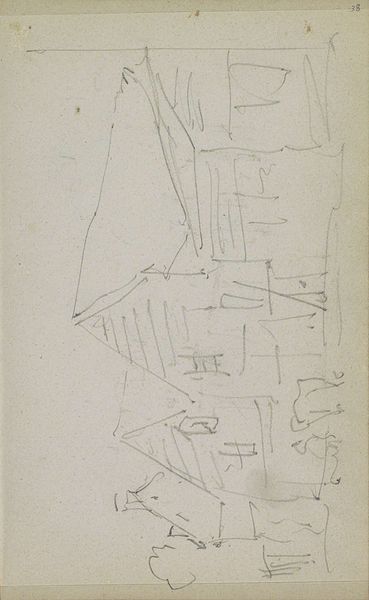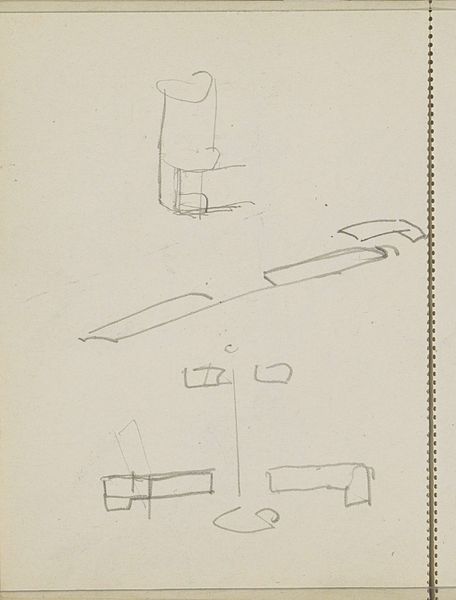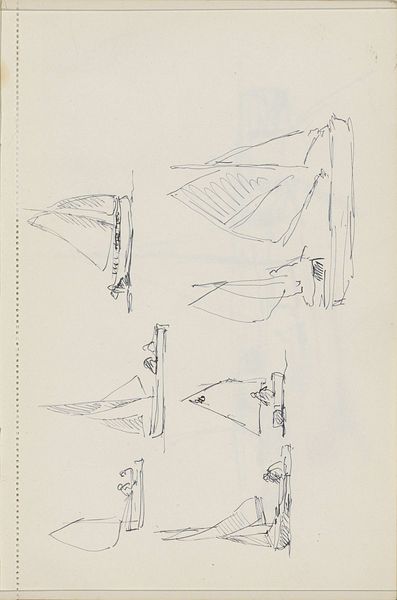
drawing, pencil
#
drawing
#
art-nouveau
#
form
#
geometric
#
pencil
Copyright: Rijks Museum: Open Domain
Editor: This is "Ontwerp voor een tafel," or "Design for a Table," created around 1895 by Carel Adolph Lion Cachet, currently housed at the Rijksmuseum. It's a pencil drawing, and the sketch-like quality makes me think about the relationship between geometric forms and functional design. What stands out to you from a formalist perspective? Curator: Indeed, the intrinsic compositional elements immediately capture the eye. Note the interplay between linear perspective and flattened representations of form. Observe how Cachet manipulates line weight to suggest depth and shadow, despite the overall two-dimensionality of the drawing. Editor: The overlapping shapes are intriguing, but also a little confusing. How do you make sense of the spatial relationships he's created here? Curator: Precisely. This is where the beauty lies. By refusing to adhere to a single, coherent perspective, Cachet emphasizes the conceptual nature of design. Each element exists not as a definitive representation of a physical object, but as a collection of lines, angles, and planes—building blocks of a potential form. The pencil medium further reinforces this notion, imbuing the design with a sense of ephemerality and possibility. Consider, also, the art nouveau influences that lead to the subversion of purely geometric form with natural motifs in an implied context. Editor: So, rather than seeing a flawed perspective, we should appreciate how the overlapping lines invite us to actively participate in envisioning the final object? Curator: Precisely. This invites a deeper engagement with the fundamental language of form itself. The absence of color directs attention solely to line, shape, and composition—the bare essentials of visual communication. The drawing becomes a semiotic exercise, a map of potential rather than a fixed reality. Editor: That's a helpful perspective! I was initially focused on trying to understand the "real" table being depicted, but now I appreciate it as an exploration of pure form. Thanks for your insight. Curator: My pleasure. Focusing on these inherent qualities allows us to appreciate its structural beauty, beyond mere function or historical relevance.
Comments
No comments
Be the first to comment and join the conversation on the ultimate creative platform.
